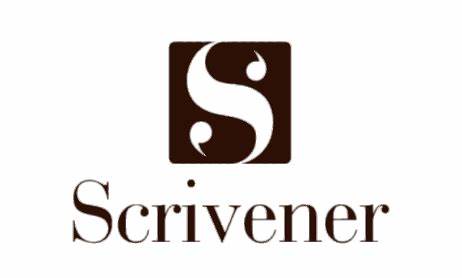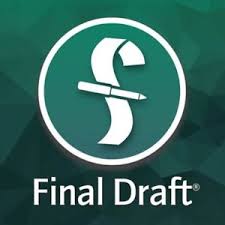Best Apps For Writing – Top 4 Writing Software For 2024

Writing apps in 2024 do so much more than your traditional word processor. The best of these apps are tailor-made for authors and offer a plethora of tools like integrated AI, story outlines, templates, and more, all in one easy-to-use package. That said, not all writing apps are created equal. Today, I’ll go in-depth into the best apps for writing available in 2024.
Like with any product, there are options when it comes to writing software; some are good, some are bad, and others are somewhere in between. Below, you’ll find a breakdown of your options as a writer, the pros and cons for each one, and my top pick for the overall best writing app. So, without further ado, let’s get started.
The Best Writing Software Is:
1. LivingWriter
The best app for writing, bar none, is LivingWriter. It makes a writer’s life much easier and solves the most common hardships writers experience with user-friendly, intuitive features. While LivingWriter can be used for almost any type of writing, it is a fiction author’s best friend and offers writers everything they need in one spot.

With well-organized manuscripts and screenplays, devoted research sections, and character integration, writing your stories has never been easier. There are also helpful, easy-to-use AI features like “Chapter to Manuscript Conversion” and collaboration tools you won’t find anywhere else.
Regardless of your medium, LivingWriter has everything you need and nothing you don’t. Here is a look at the key features.
Notable Features
- Organized Writing Space: Manuscripts are divided into plot points, chapters, and character sections, with customizable status options and color coding for easy navigation.
- Note-taking and Brainstorming Tools: Includes global notes, standard and free-form plotting grids, mind maps, timelines, plots, and family trees.
- AI Tools: Cutting-edge AI features like outline generation, AI rewrite, tone analysis, and character art images.
- Research Boards: Store reference articles, images, and notes for easy access and organization.
- Smart Manuscripts: Simple, familiar writing space with no learning curve, offering everything a traditional word processor does.
- Story Outline Templates: Choose from various templates when starting a manuscript.
- Easy Exporting: Export to PDFs, DOCX files, Google Drive, Dropbox, and Amazon Manuscript format for KDP. Include elements, notes, and a table of contents.
- Smart Elements: Intuitively links element names in the manuscript to descriptions, nicknames, relationships, and pictures.
- Real-Time Feedback and Collaboration: Collaborate with others and receive real-time feedback on your manuscript.
Pros And Cons
| Pros | Cons |
| User-friendly and easy to use | Not designed specifically for screenwriters. |
| No program download is needed. | |
| Free 14-day trial available ($9.99 afterward) | |
| Free 14-day trial available ($9.99 afterward) | |
| Companion apps for iOS and Android | |
| Cloud-based autosaving |
Writers all over the web feel the same about LivingWriter, too. One such example is Ameredian’s independent The Best Writing Apps and Book Writing Software review.
2. Scrivener
While Scrivener shares some features with LivingWriter, there are notable differences to consider. Unlike LivingWriter, Scrivener isn’t web or cloud-based, limiting device accessibility. Syncing files requires third-party storage services, adding an extra layer of complexity.

One major drawback of Scrivener is its lack of co-authoring and editing capabilities. This means collaborative writing and feedback are more challenging than LivingWriter’s seamless collaboration features.
Another aspect to consider is the user interface. Scrivener’s interface can be confusing and outdated, requiring additional effort to navigate effectively. Unlike LivingWriter’s intuitive design, Scrivener may require users to consult external resources to use its tools.
Notable Features
Despite these drawbacks, Scrivener offers a handful of LivingWriter’s features that writers may find helpful.
- Scene and Chapter Organization: Scrivener allows for the basic separation of scenes and chapters, providing a structured approach to writing.
- Import Options: You can import various file types, including Word documents, images, and web pages.
- Virtual Corkboard and Timeline View: Visualizing scenes and chapters on a virtual corkboard and rearranging them on a timeline offers some of the same flexibility as LivingWriter plotting boards.
- Custom Templates: Scrivener provides customizable templates for different writing formats, from novels to screenplays.
- Export Options: Writers can export their work to various formats, including Microsoft Word and Final Draft. However, KDP isn’t available.
Pros And Cons
| Pros | Cons |
| 30-Day free trial | Outdated, hard-to-use interface |
| Has the most features outside of LivingWriter | Must purchase separate versions for each platform |
| Available for Windows and iOS | Limited collaboration features |
| You have to pay extra to update the software. |
3. Storyist
Storyist earns a place on the list but not at the top. While it shares some features with LivingWriter and has a smoother interface than Scrivener and FinalDraft, it falls short in many regards. You won’t find any of the smart features, and not having your chapters, elements, notes, etc, linked impacts the overall usability compared to LivingWriter and even the runner-up Scrivener.

Despite falling short of our top spots for the best writing apps, Storyist has some decent options for screenwriters seeking an alternative to the high cost of FinalDraft. Here are some key features of Storyist.
Notable Features
- Folders and Virtual Index Cards: Storyist organizes chapters and subchapters into folders and provides virtual index cards for each scene.
- Auto-Suggest: Auto-suggestions for dialogue, scene introductions, character names, etc.
- Revision History: Storyist offers hourly revision changes and the ability to name them.
- Stylesheets and Word Count Goals: Stylesheets support common manuscripts, screenplay formats, and word count goals.
- Export Options: Storyist allows users to export their work to various formats, including Blurb, DOCX, HTML, RTF, and TXT, as well as compatible formats for Scrivener and Final Draft.
Pros And Cons
| Pros | Cons |
| Boasts a sleeker interface compared to Scrivener and FinalDraft | Available only for Mac and iOS. Can’t be used on Windows, Android, and web platforms |
| Offers basic tools like storyboarding, outlining, and character sheets | It costs extra to use the iPhone app |
| Supports importing and exporting of various file formats | Lacks co-authoring and editing capabilities, limiting collaboration |
| Doesn’t link chapters, elements, descriptions, or notes to one another | |
| Primarily for screenwriters |
4. Final Draft
FinalDraft is not my top pick overall for writing apps due to its outdated and confusing interface, but it will have some appeal to serious screenwriters. Priced at $250, it’s packed with features specifically tailored to screenplay writing, making it useful for professionals in the field.

Notable Features
- Formatting Tools: Formatting tools tailored to screenwriting, ensuring adherence to industry standards.
- Auto Suggest For Dialogue
- Navigator Window: It is easy to navigate scenes, script notes, characters, and tags, such as script day, location, and cast members, streamlining the writing process.
- Story Map: The Story Map feature displays the length of the script in pages and your current position among those pages
- Beat Board: Final Draft’s version of LivingWriter’s Boards for organization.
- Auto-Save and Revision History: Auto-saves every 15 minutes and maintains a revision history, providing users with peace of mind and the ability to track changes over time.
Pros And Cons
| Pros | Cons |
| Many tools, options, and templates for screenwriters | Much more expensive than other options at $250 |
| All collaborators must own a copy of the software. | |
| Doesn’t have good features for writing novels. |
Conclusion
There you have it—the Top five best writing apps available in 2024. In conclusion, exploring dedicated writing apps can unlock a world of efficiency and creativity for writers ready to elevate their writing experience beyond traditional tools like MS Word and Google Docs.
While options like Scrivener, FinalDraft, and Storyist each offer unique features tailored to specific needs, LivingWriter emerges as the standout choice.
Combining the best elements from various platforms with innovative, cutting-edge features unique to LivingWriter, this all-in-one solution provides writers with a seamless, user-friendly experience. With no unnecessary clutter or complicated interfaces,
LivingWriter streamlines the writing process and empowers writers to bring their stories to life effortlessly. For writers seeking a comprehensive, reliable writing companion at an affordable price, LivingWriter stands out as the ultimate solution.